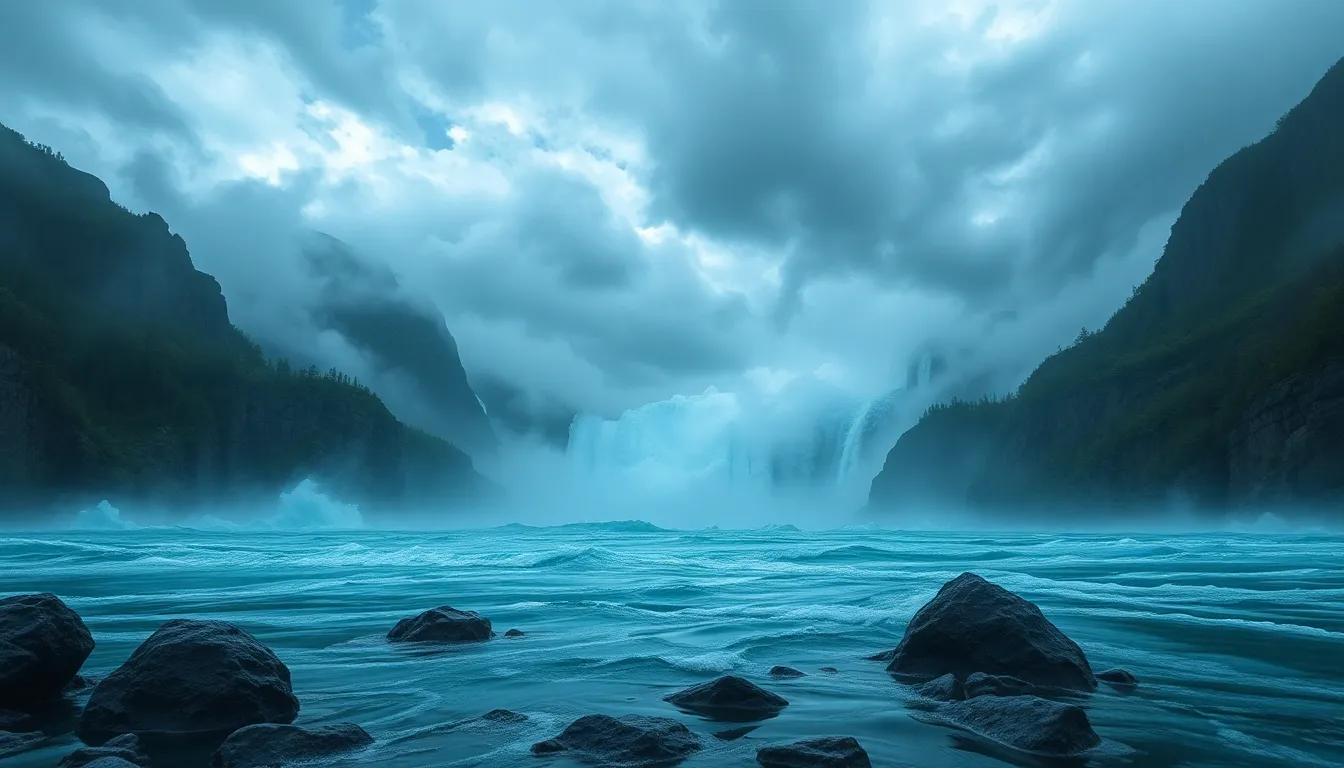The Selkie’s Legacy: Exploring the Enduring Impact of Selkie Stories on Modern Culture
I. Introduction
The concept of Selkies—mythical creatures that can transform from seals to humans—has captivated the imagination for centuries. Originating from Celtic folklore, these enchanting beings embody a blend of beauty, mystery, and tragedy. This article aims to explore the lasting influence of Selkie tales on contemporary culture, examining their historical origins, themes, representations in literature and art, and their relevance in today’s society.
II. Historical Origins of Selkie Myths
Selkie legends are deeply rooted in Celtic folklore, particularly in the coastal regions of Scotland, Ireland, and the Orkney and Shetland Islands. These stories often depict Selkies as being able to shed their seal skins to take on human form, usually leading to romantic encounters with humans.
The geographic regions associated with Selkie stories include:
- Scotland
- Iceland
- Norway
- Ireland
Over time, Selkie myths have evolved, reflecting the changing societal values and the relationship humans have with the sea. Initially, they were seen as cautionary tales about the dangers of the ocean and the consequences of straying from one’s true nature. As society progressed, these stories began to incorporate themes of love, loss, and the complexity of human emotions.
III. Symbolism and Themes in Selkie Stories
Selkie stories often explore profound themes and symbolism, particularly the duality of human existence and the connection to nature. This duality highlights the struggle between human desires and the innate call of the wild.
Key themes present in Selkie narratives include:
- The duality of human and nature: Selkies are embodiments of the struggle between civilization and the wild, representing the yearning to return to one’s natural state.
- Themes of loss and longing: Many Selkie tales focus on the sorrow of leaving behind one’s true form for love, emphasizing the pain of separation.
- Gender roles and empowerment: Selkies often challenge traditional gender roles, showcasing female empowerment through their autonomy and ability to choose their fate.
IV. Selkie Representation in Literature
Selkies have been featured in numerous literary works, ranging from classic tales to contemporary novels. In classic literature, writers such as John Keats and the Brothers Grimm have drawn inspiration from Selkie myths, weaving them into their narratives.
Modern adaptations have seen Selkies reimagined in various genres, including:
- Fantasy novels
- Young adult fiction
- Poetry
In children’s literature, Selkies serve as enchanting figures that introduce themes of transformation, belonging, and the importance of nature. These stories often emphasize moral lessons, such as the value of honesty and the consequences of choices.
V. The Visual Impact of Selkies in Art and Film
Selkie imagery has profoundly influenced visual arts, inspiring countless artists to depict these mystical beings in paintings, sculptures, and illustrations. The allure of the Selkie’s duality—both human and seal—offers a rich visual narrative that resonates with audiences.
Prominent films and television series that feature Selkies include:
- The Secret of Roan Inish – A film that beautifully captures the essence of Selkie folklore.
- Song of the Sea – An animated feature that draws heavily on Irish mythology, including Selkie legends.
- The Selkie – A short film that explores the emotional depth of Selkie stories.
Moreover, Selkie stories have made their mark in animation and graphic novels, where their enchanting narratives and rich symbolism lend themselves well to visual storytelling.
VI. The Selkie’s Influence on Music and Performance
Selkies have also found a place in music and performance. Traditional songs and ballads about Selkies often recount their tales of love and loss, echoing the themes found in folklore. These songs serve as a means of preserving cultural heritage and sharing stories across generations.
Modern musical interpretations of Selkie stories can be found in various genres, including:
- Folk music
- Indie music
- Contemporary classical compositions
In addition, Selkie narratives have been adapted for theater and dance, allowing audiences to experience the emotional depth of these stories in dynamic and engaging ways.
VII. The Cultural Relevance of Selkie Stories Today
In contemporary discussions, Selkie myths continue to resonate, particularly regarding identity and belonging. The duality inherent in Selkie stories often mirrors the complexities of modern life, where individuals navigate multiple identities and cultural expectations.
Environmental themes are also prevalent, as Selkie stories remind us of the importance of our connection to nature and the sea. These narratives can inspire activism aimed at protecting marine ecosystems and addressing climate change.
Furthermore, Selkie stories serve as a source of inspiration for various forms of activism, including:
- Environmental protection initiatives
- Gender equality movements
- Cultural preservation efforts
VIII. Conclusion
The enduring legacy of Selkie tales highlights their profound influence on modern culture. As we explore the historical origins, themes, and representations of Selkies, it becomes clear that these stories remain relevant in today’s society.
Preserving folklore, such as the enchanting tales of Selkies, is crucial for understanding our cultural heritage and fostering a sense of identity. As we look to the future, Selkie stories will undoubtedly continue to inspire, challenge, and connect us across generations.




